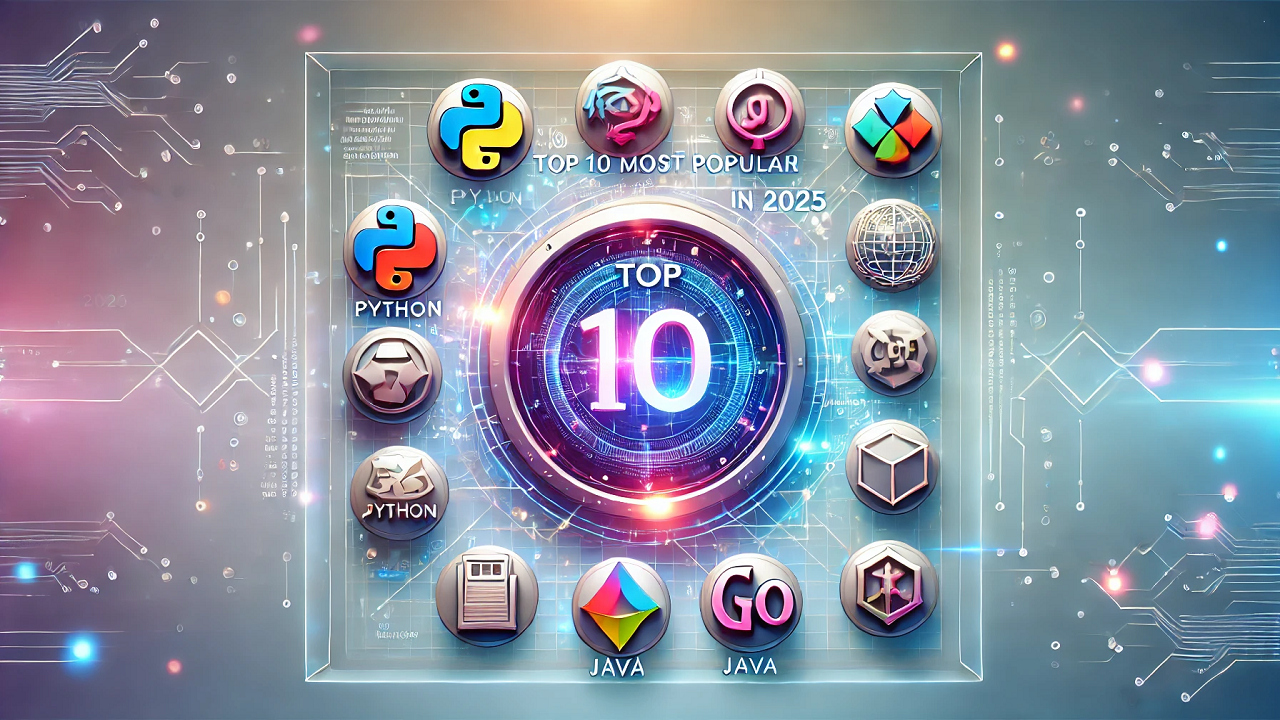Programming language rankings for 2025 show how coding languages influence software trends. Advances in AI, cloud computing, and automation keep changing the game. Developers and businesses need to keep up to remain competitive.
This article dives into the 2025 predictions. It offers insights into the future of programming languages and their uses in the real world.

Key Takeaways
- 2025 rankings reflect evolving demands in tech innovation and industry needs.
- Top coding languages impact everything from app development to enterprise systems.
- Methodology includes data from industry reports and developer surveys.
- Future programming languages will prioritize scalability and cross-platform compatibility.
- Staying updated ensures professionals and companies align with emerging software development trends.
The Evolution of Programming Language Popularity
Choosing a programming language isn’t random. It shows the software development evolution over decades. This evolution is driven by innovation and business needs. Changes in technology shape which languages are used more or less.
Historical Trends in Programming Language Adoption
In the 1950s, COBOL and FORTRAN helped solve data problems after World War II. By the 1970s, C became key for systems programming. The 1990s brought Java with the internet, and Python’s flexibility made it popular by the 2010s. These changes are important in programming language history.
- COBOL: Government and finance systems
- C: Unix and embedded devices
- Java: Enterprise web applications
- Python: Data science and automation
How Industry Demands Shape Language Popularity
In healthcare, Python is used for medical AI and data analysis. Financial firms use C++ for fast trading algorithms. Entertainment uses C# for game engines like Unity. These tech industry trends keep languages relevant by solving specific problems.
The Impact of Emerging Technologies on Programming Languages
AI and machine learning boost Python’s use, while quantum computing needs special tools like Q#. IoT devices prefer C and Rust for memory efficiency. These changes show how emerging programming paradigms meet new hardware and software needs.
Knowing these patterns helps guess future trends. As cloud computing and edge devices grow, languages that balance performance and ease will lead. History shows that being adaptable, not just new, leads to lasting success.
Top 10 Most Popular Programming Languages in 2025
Choosing the best programming languages for your career is key. It depends on in-demand coding skills and trends. Here’s a list of top languages for 2025, based on adoption, job demand, and growth.

- Python leads in AI/ML, thanks to TensorFlow and Django. These tools are used by Netflix for AI projects.
- JavaScript is crucial for web development. It’s used in 95% of websites, thanks to React and Node.js.
- Java is strong in backend systems. It’s used by 90% of Fortune 500 companies, thanks to Spring Boot and Hibernate.
- Go (Golang) shines in cloud infrastructure. Google and Docker use it for fast microservices.
- Rust is growing in systems programming. It’s backed by Mozilla and reduces bugs in embedded systems.
- TypeScript solves JavaScript’s scalability problems. It’s now a must at Microsoft and Amazon for big apps.
- Swift is Apple’s go-to for iOS. SwiftUI makes app development fast for brands like Uber.
- Kotlin is Android’s top choice. It’s used in 70% of new Android apps with Jetpack Compose.
- Ruby is still used in legacy systems. Rails powers e-commerce sites like Shopify.
- C++ is key in gaming and embedded tech. It’s vital for real-time systems at Unity and NVIDIA.
Frameworks like React Native and TensorFlow show the importance of ecosystem strength. Developers focusing on popular programming frameworks and specific use cases will thrive in 2025’s job market.
Key Factors Driving Programming Language Popularity
Every programming language’s success or failure is influenced by technical and social factors. Knowing these helps predict which enterprise programming languages will lead in the future. This section explores the main elements that shape programming language adoption in tech.
Enterprise Adoption and Commercial Support
Big companies backing a language ensures its long-term success. Java and C# are examples, thanks to Oracle and Microsoft’s support. These enterprise programming languages offer official guides and paid help, making them safe for big projects.
Community Size and Ecosystem Strength
“A vibrant developer community cuts problem-solving time by 40%.”
Languages with strong developer community networks, like Python, create lasting ecosystems. These communities offer tutorials, libraries, and forums. This makes it easier for new developers to join, boosting programming language adoption.
Learning Curve and Developer Experience
- Python’s simple syntax makes it easy for beginners
- Rust’s safety features require mastering ownership models
- JavaScript’s frontend dominance drives demand despite complex frameworks
Performance and Scalability Considerations
| Language | Coding Performance Metrics | Use Case |
|---|---|---|
| Rust | Memory safety, concurrency | Systems programming |
| Java | JIT compilation, scalability | Enterprise backends |
| Python | Interpreted speed, libraries | Data science |
High coding performance metrics are crucial in areas like gaming (C++) or AI (CUDA). Frameworks like TensorFlow boost Python’s abilities, despite its speed limits.
How to Choose the Right Programming Language for Your Career Path
Choosing the right programming language is key to your career. Start by finding what you love—like web development, data science, or making mobile apps. Then, pick languages that fit your passion, such as Python for AI, JavaScript for web, or Swift for iOS.
Look at local job trends to plan your tech career. Use sites like indeed.com or linkedin.com to see which languages are in demand where you live.
- Web developers: Focus on JavaScript (Node.js) and TypeScript for full-stack roles.
- Data professionals: Emphasize Python and R for analytics jobs.
- Enterprise roles: Java and C# are crucial for big company software.
“Master one language deeply, then learn others strategically. Transferable concepts like object-oriented programming or algorithmic thinking bridge gaps between syntaxes.” — IEEE Career Guide
It’s important to balance depth and breadth in your skills. Specialize in areas like cloud development (Go or Rust) but also know related tools. For example, knowing Docker with Python can help in cloud engineering.
Use platforms like Coursera or GitHub to keep up with trends. This way, you can see what’s popular and what’s not.

Be ready to adapt by following surveys and rankings. Join groups like Reddit’s r/learnprogramming or local meetups for fresh insights. Update your skills every year to stay relevant in the job market. Remember, constant learning in your field keeps you competitive.
Conclusion: Preparing for the Future of Programming
Programming languages keep changing, making future-proof programming skills key. Knowing basics like algorithms and data structures helps you adapt. This is why coding education that focuses on these will become more important.
To stay ahead, you need to keep learning. New areas like AI and quantum computing are coming. Learning about DevOps and cloud tools is also crucial.
What languages are used depends on the market and community support. It’s important to choose languages that are both popular now and will be in the future. This means picking languages with strong support and tools.
Looking ahead, the tech world will keep changing fast. Trying out new tools and languages is important. This way, you can lead in innovation.
Success comes from making choices that fit your projects and team. Keep an eye on programming trends forecast but don’t forget the basics. By focusing on future-proof programming skills, you can thrive in the changing tech world.
FAQ:
What are the most popular programming languages in 2025?
The top programming languages for 2025 are Python, JavaScript, and Java. C#, Go, Rust, Swift, Kotlin, PHP, and TypeScript are also popular. They are chosen for their versatility, strong community support, and wide use in different fields.
How do industry demands impact programming language trends?
Industry needs shape the trends in programming languages. For example, Python and R are more popular in data science and AI. Java and C++ are still key for big business and system programming.
What factors should I consider when choosing a programming language to learn?
Think about your career goals and what kind of development you’re interested in. Look at the learning resources, community size, and demand in your area. Learning one language well and a few others can also be helpful.
How can emerging technologies influence language popularity?
New tech like AI, machine learning, and IoT are making some languages more popular. For example, Python is used with TensorFlow, and Rust is growing for safe system programming.
What role does community support play in the popularity of programming languages?
A strong community makes a language more popular. It offers lots of documentation, libraries, and a place for developers to help each other. This creates a cycle that draws in more users.
How important is performance and scalability in choosing a programming language?
Performance and scalability are very important, mainly for big projects. Languages like Go for speed and C# for big business are often chosen. They offer the best performance and can handle large tasks well.

